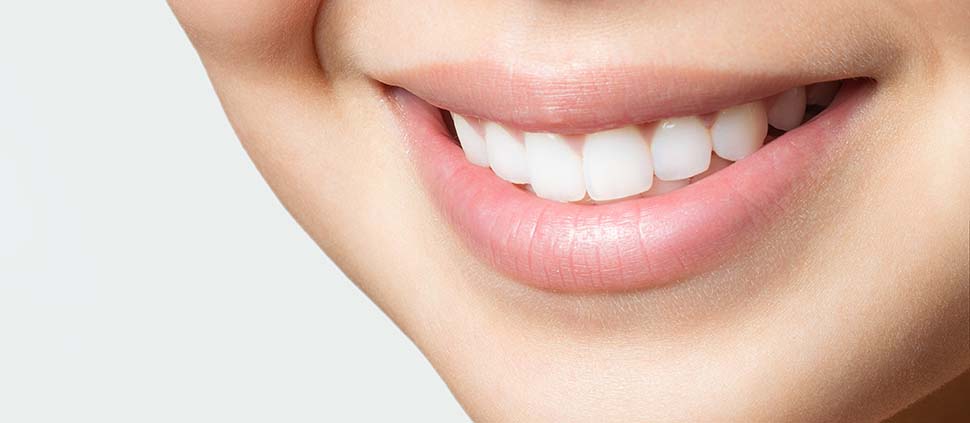.svg)
.svg)
.svg)
.svg)
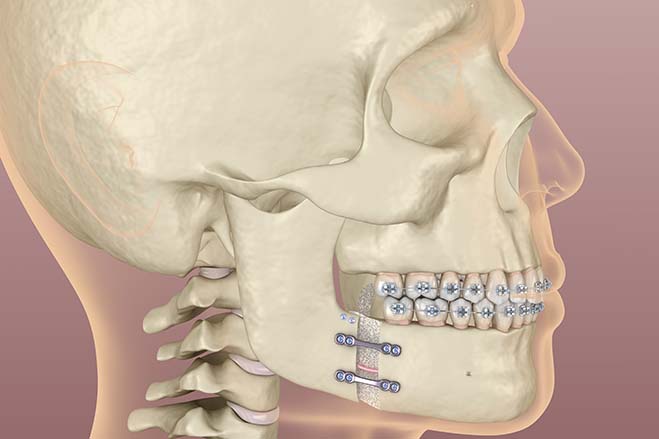
Jaw Surgery (Orthognathic Surgery)
What Is Jaw Surgery?
Jaw surgery is surgery that helps align your upper jaw (maxilla) and lower jaw (mandible) to correct dental misalignments. It’s also known as “orthognathic surgery”, where “orthognathic” means “straight jaw".
Misaligned jaws can affect your bite, making it difficult to eat and speak properly. An oral and maxillofacial surgeon (a specialist in surgery of the face, mouth, and jaws), often working with an orthodontist (a dentist who corrects irregularities of the teeth and jaw), performs this procedure to improve functions such as chewing and breathing, while also enhancing your facial appearance. If you have jaw problems, consider consulting a specialist to see if this surgery is right for you.
Quick Links
Why Is Orthognathic Surgery Necessary?
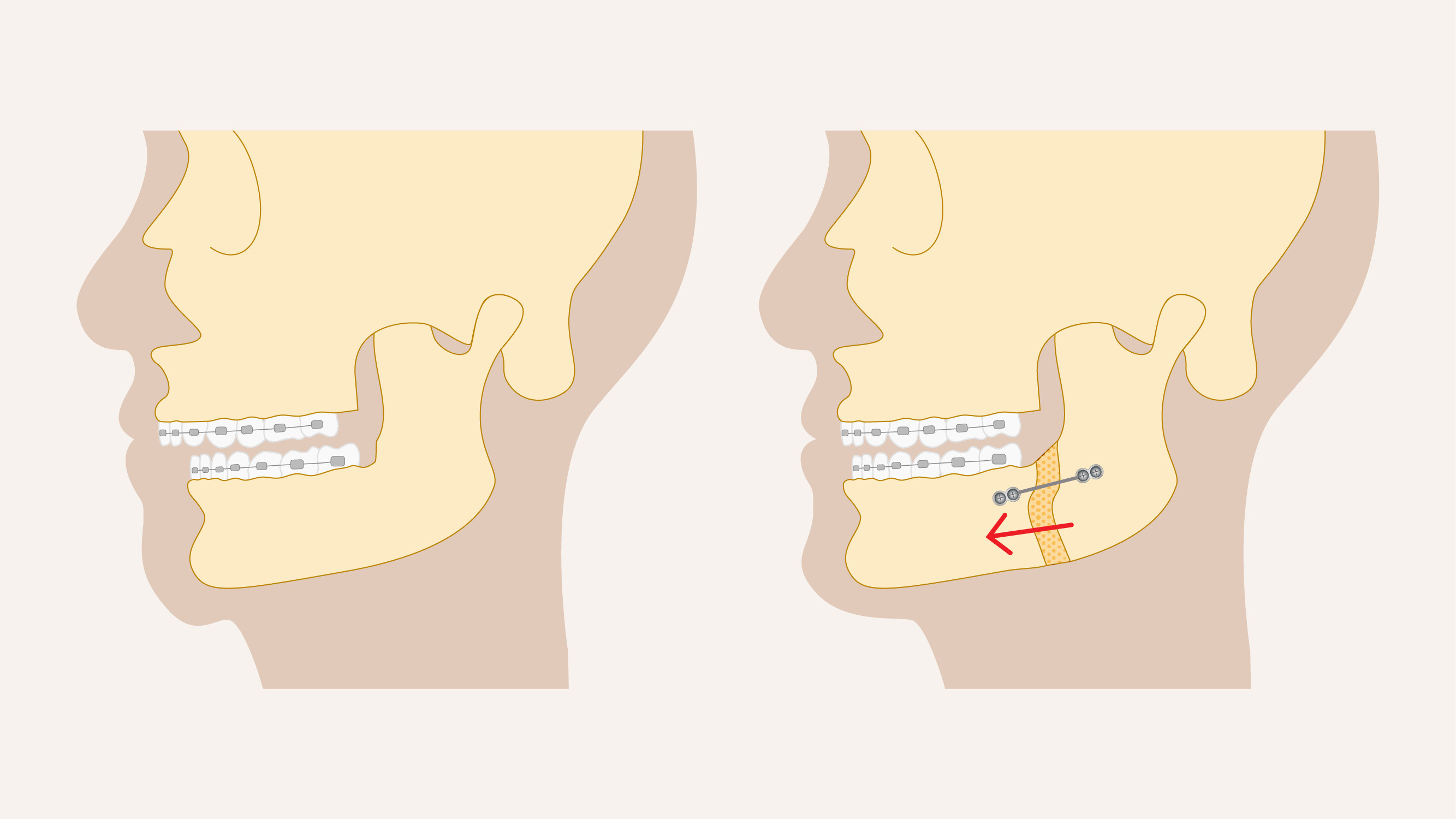
Why Is Orthognathic Surgery Necessary?
• Correcting Your Bite: Realigns a misaligned bite, helping your teeth fit together properly when your mouth is closed.
• Improving Facial Symmetry: Significantly enhances facial symmetry, which improves both your health and appearance.
• Easing Everyday Functions: Makes biting, chewing, and swallowing easier, and also helps with speaking and breathing problems caused by jaw misalignment.
• Relieving TMJ Pain: Helps reduce pain from temporomandibular joint (TMJ) disorder, a condition causing pain and dysfunction in the jaw joint and surrounding muscles. TMJ is the hinge connecting your jaw to the temporal bones of your skull, which are in front of each ear.
• Repairing Injuries and Birth Defects: Jaw surgery is often needed to fix injuries or congenital conditions like a cleft palate (a split or opening in the roof of the mouth that can affect eating, speech, and ear health).
• Preventing Wear and Tear: Helps prevent further damage to your teeth.
• Improving Breathing: The surgery can help with breathing problems like mouth breathing and sleep apnea (involves repeated interruptions in breathing during sleep, which can lead to severe health issues) by widening your airways.
Conditions Jaw Surgery Can Treat
- Flat Upper Jaw: When the upper jaw doesn’t develop fully, leading to a flat appearance.
- Excessive Show of Gums (Gummy Smile): When too much gum tissue shows when smiling.
- Overall Elongation of the Face: When the face appears longer than normal.
- Facial Asymmetry: When one side of the face looks different from the other.
- Protruding or Long Lower Jaw: When the lower jaw is too long or juts out beyond the upper jaw, often causing an underbite.
- Short Lower Jaw (Receding Jaw/Weak Chin): When the lower jaw is too short, often causing an overbite.
- Obstructive Sleep Apnea (OSA): A condition where the airway is blocked during sleep, causing breathing issues.
- Jaw Deformities from Trauma/Post-Traumatic Facial Injury: Injuries to the jaw or facial damage from accidents needing reconstruction.
- Cleft Lip/Palate and Birth Defects: Birth defects where the lip or roof of the mouth doesn’t form properly, or other congenital issues.
- Open Bite/Correcting Bite Fit Issues: When the front teeth don’t touch when the mouth is closed, or correcting issues where the molars (large, flat teeth at the back of the mouth used for grinding and chewing food) touch but the front teeth don’t.
- Severe Crossbite: When the upper and lower teeth don’t align properly, causing some lower teeth to sit outside the upper teeth.
- Chronic Jaw Pain/TMJ Disorders: Persistent pain in the jaw from disorders like TMJ, which can be addressed by surgery.
- Problems with Swallowing or Speech: Issues caused by misaligned jaws.
- Minimising Excessive Wear of Teeth: Prevents teeth from wearing down due to misalignment.
- Improving Lip Closure: Helps lips close comfortably.
- Repairing Facial Injuries or Birth Defects: Fixes damage or defects from injuries or congenital issues.
- Treating Cysts and Tumours: Jaw surgery can also address growths in the jaw.
- Growth Disturbances: Addresses unusual jaw growth due to excessive growth hormone.
- Chronic Mouth Breathing with Dry Mouth and Inflamed Gums: Surgery can help by improving airway function, reducing mouth breathing, dry mouth, and gum inflammation.
Types of Jaw Surgery
Genioplasty (Chin Augmentation)
Jaw replacement surgery involves replacing damaged or missing jawbone with a prosthetic implant: an artificial device used to replace a missing or damaged body part, restoring its function and appearance. This surgery is essential for patients with severe jaw damage.
Conditions Treated:
- Jaw Deformities from Trauma/Post-Traumatic Facial Injury
- Cleft Lip/Palate and Birth Defects
- Chronic Jaw Pain/TMJ Disorders
- Treating Cysts and Tumours
- Growth Disturbances
- Severe Crossbite
- Repairing Facial Injuries or Birth Defects
Genioplasty (Chin Augmentation)
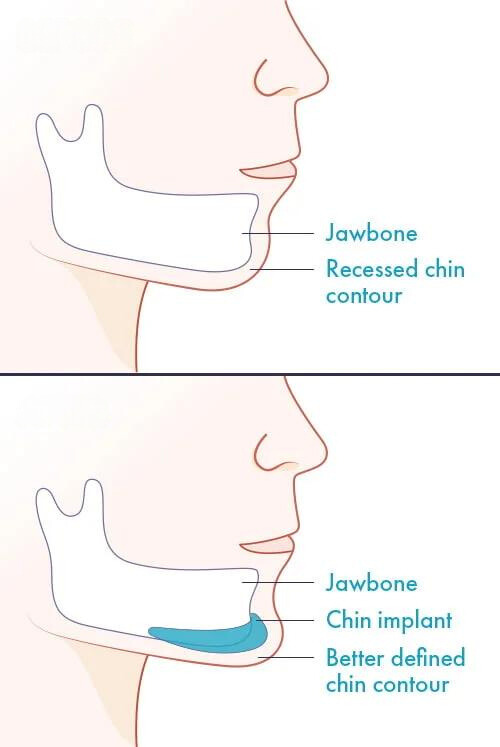
Maxillary Osteotomy (Upper Jaw Surgery)
If your upper jaw's growth affects your bite, a maxillary osteotomy can help. This surgery involves repositioning your upper jaw for better alignment with your lower jaw, improving bite and facial aesthetics.
Conditions Treated:
- Overbites
- Crossbites
- Excessive Show of Gums (Gummy Smile)
- Flat Upper Jaw
- Facial Asymmetry
- Overall Elongation of the Face
- Problems with Swallowing or Speech
Maxillary Osteotomy (Upper Jaw Surgery)
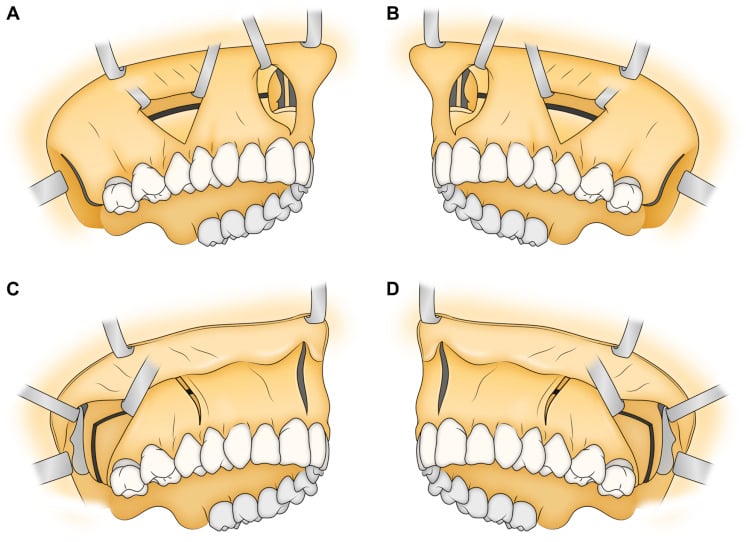
Mandibular Osteotomy (Lower Jaw Surgery)
A mandibular osteotomy realigns your lower jaw to enhance facial symmetry and improve biting and chewing. This surgery is typically performed after the jaw bones are fully grown.
Conditions Treated:
- Protruding or Long Lower Jaw
- Short Lower Jaw (Receding Jaw/Weak Chin)
- Facial Asymmetry
- Chronic Jaw Pain/TMJ Disorders
- Improving Lip Closure
- Minimising Excessive Wear of Teeth
- Problems with Swallowing or Speech
Mandibular Osteotomy (Lower Jaw Surgery)
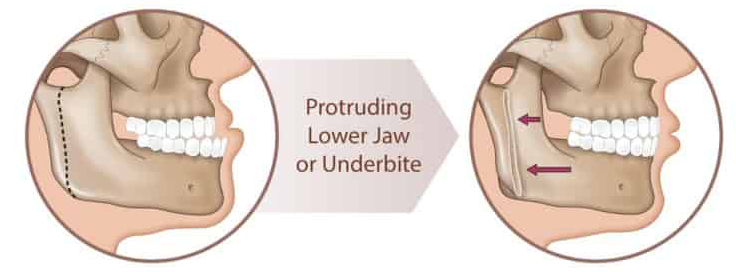
Bimaxillary Osteotomy (Double Jaw Surgery)
For irregularities in both your upper and lower jaws, a bimaxillary osteotomy can correct misalignment, enhancing your bite and jaw function.This procedure improves chewing, speaking, and reduces chronic jaw pain, while also enhancing facial symmetry. Recovery involves a multidisciplinary approach for optimal results.
Conditions Treated:
- Severe Crossbite
- Open Bite/Correcting Bite Fit Issues
- Chronic Jaw Pain/TMJ Disorders
- Facial Asymmetry
- Overall Elongation of the Face
- Improving Lip Closure
- Problems with Swallowing or Speech
Bimaxillary Osteotomy (Double Jaw Surgery)
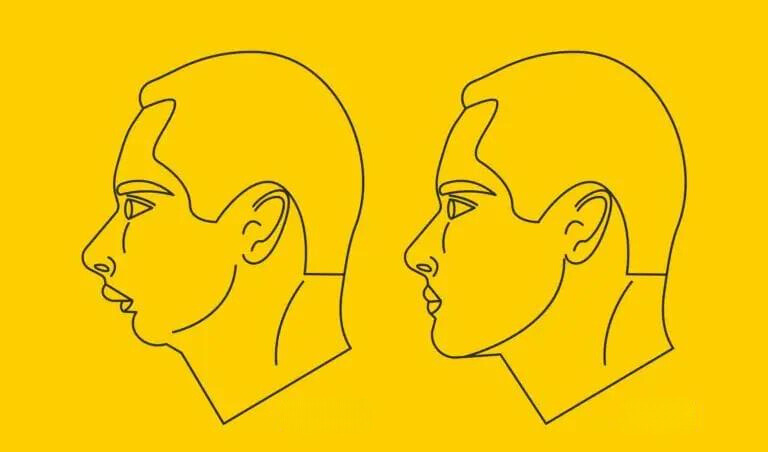
TMJ Surgery
- Disc Repositioning (Meniscopexy): This procedure involves repositioning the disc within the jaw joint to alleviate pain and improve function.
- Arthrocentesis: This is a minimally invasive procedure where small needles are used to inject fluid into the TMJ. The fluid helps lubricate the joint and flush out any debris or byproducts of inflammation.
- Arthroscopy: A minimally invasive surgery where a thin tube called a cannula is inserted into the joint, allowing the surgeon to use a thin scope (arthroscope) and small tools to perform the surgery. This technique usually involves less recovery time compared to open surgery.
- Open Joint Surgery (Arthrotomy): A more invasive procedure where an incision is made in front of the ear, allowing the surgeon to directly access, replace, or remove affected TMJ components. This is typically used for more severe cases or when other methods are not suitable.
Conditions Treated:
- Chronic Jaw Pain/TMJ Disorders
- Chronic Mouth Breathing with Dry Mouth and Inflamed Gums
TMJ Surgery
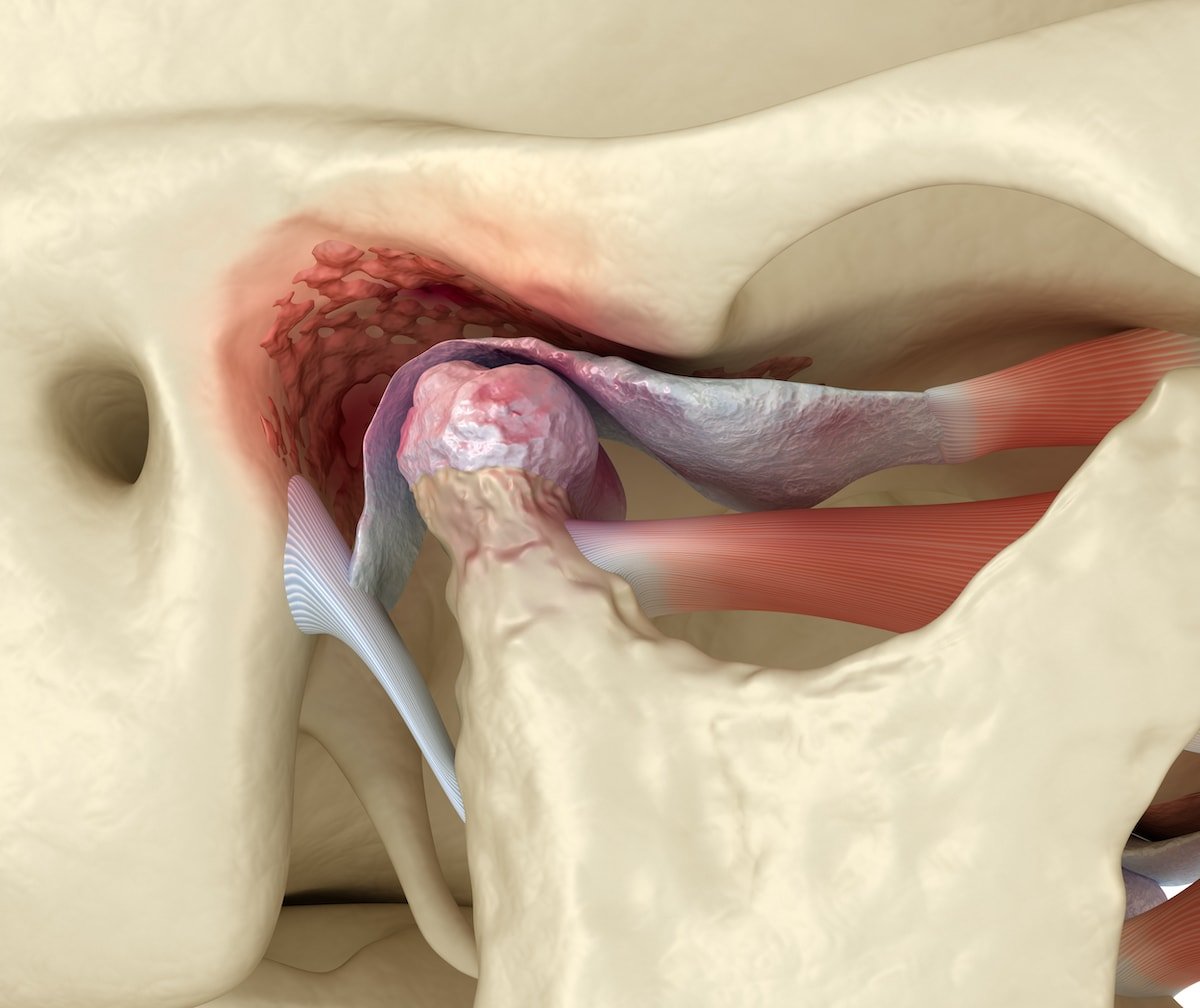
Cleft Palate Surgery
If your child has a cleft palate (a birth defect affecting the roof of the mouth), seek a qualified maxillofacial surgeon. Early repair, typically within the first 12 months, prevents speech and swallowing problems. The procedure restructures the palate to create a seal between the mouth and nose, supporting normal speech development. The goal is to enhance your child's quality of life and minimise future interventions.
Conditions Treated:
- Cleft Lip/Palate and Birth Defects
- Problems with Swallowing or Speech
- Improving Lip Closure
Cleft Palate Surgery

Le Fort I Osteotomy
For more complex upper jaw misalignments, a Le Fort I Osteotomy might be necessary. This procedure repositions the upper jaw to enhance both function and appearance, ensuring that your upper and lower teeth meet correctly for a stable and attractive jawline.
Conditions Treated:
- Open Bite/Correcting Bite Fit Issues
- Facial Asymmetry
- Severe Crossbite
- Flat Upper Jaw
- Excessive Show of Gums (Gummy Smile)
- Problems with Swallowing or Speech
Le Fort I Osteotomy
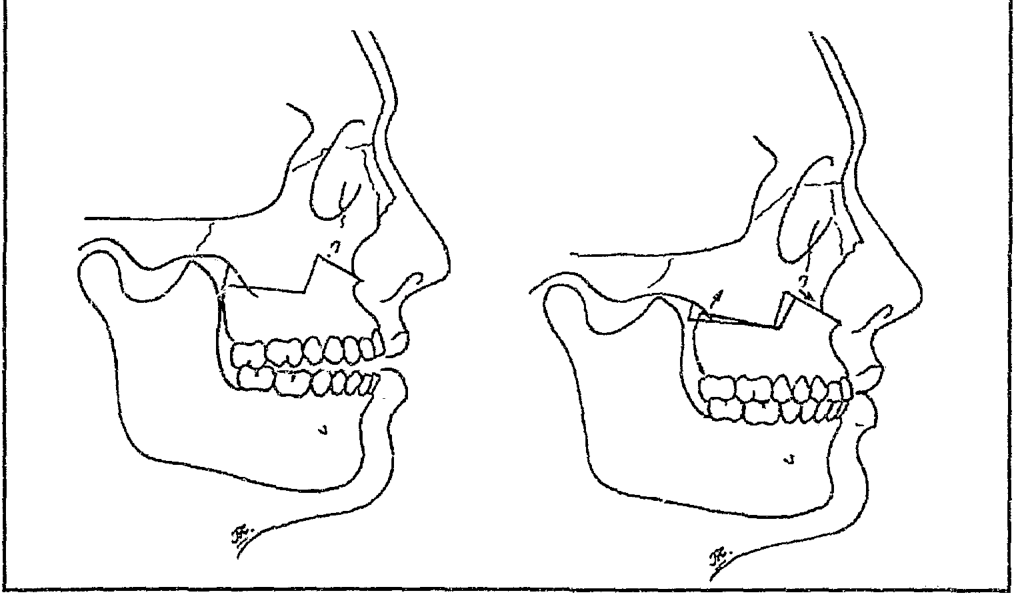
Bilateral Sagittal Split Osteotomy (BSSO)
Bilateral Sagittal Split Osteotomy (BSSO) is used to correct significant lower jaw misalignments. The technique involves dividing the mandible on both sides to move it into a better position, improving occlusion (blockage or closing of a blood vessel or hollow organ) and overall facial aesthetics.
Conditions Treated:
- Protruding or Long Lower Jaw
- Short Lower Jaw (Receding Jaw/Weak Chin)
- Facial Asymmetry
- Chronic Jaw Pain/TMJ Disorders
- Open Bite/Correcting Bite Fit Issues
- Minimising Excessive Wear of Teeth
Bilateral Sagittal Split Osteotomy (BSSO)
.png)
Distraction Osteogenesis
Distraction osteogenesis is a technique that encourages new bone growth by gradually separating the bone, allowing new bone to fill the gap. It involves four steps: cutting the bone, a waiting period for initial healing, mechanical separation of the bone segments, and a resting phase to strengthen the new bone. This avoids the need for bone grafts, making it a less invasive option. It's a well-considered approach within orthodontics to address jaw deformities and ensure proper jaw function and appearance.
Conditions Treated:
- Short Lower Jaw (Receding Jaw/Weak Chin)
- Obstructive Sleep Apnea (OSA)
- Jaw Deformities from Trauma/Post-Traumatic Facial Injury
- Cleft Lip/Palate and Birth Defects
- Growth Disturbances
- Chronic Mouth Breathing with Dry Mouth and Inflamed Gums
Distraction Osteogenesis
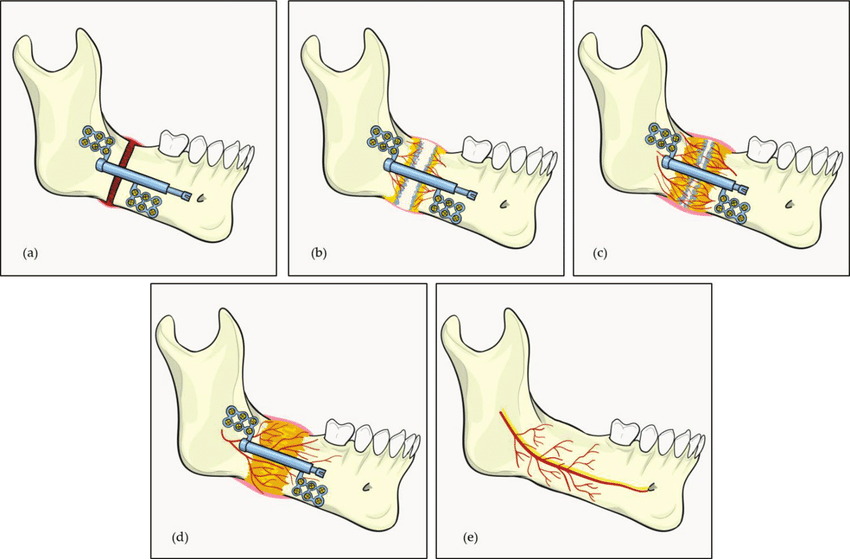
Jaw Replacement Surgery
Jaw replacement surgery involves replacing damaged or missing jawbone with a prosthetic implant: an artificial device used to replace a missing or damaged body part, restoring its function and appearance. This surgery is essential for patients with severe jaw damage.
Conditions Treated:
- Jaw Deformities from Trauma/Post-Traumatic Facial Injury
- Cleft Lip/Palate and Birth Defects
- Chronic Jaw Pain/TMJ Disorders
- Treating Cysts and Tumours
- Growth Disturbances
- Severe Crossbite
- Repairing Facial Injuries or Birth Defects
Jaw Replacement Surgery
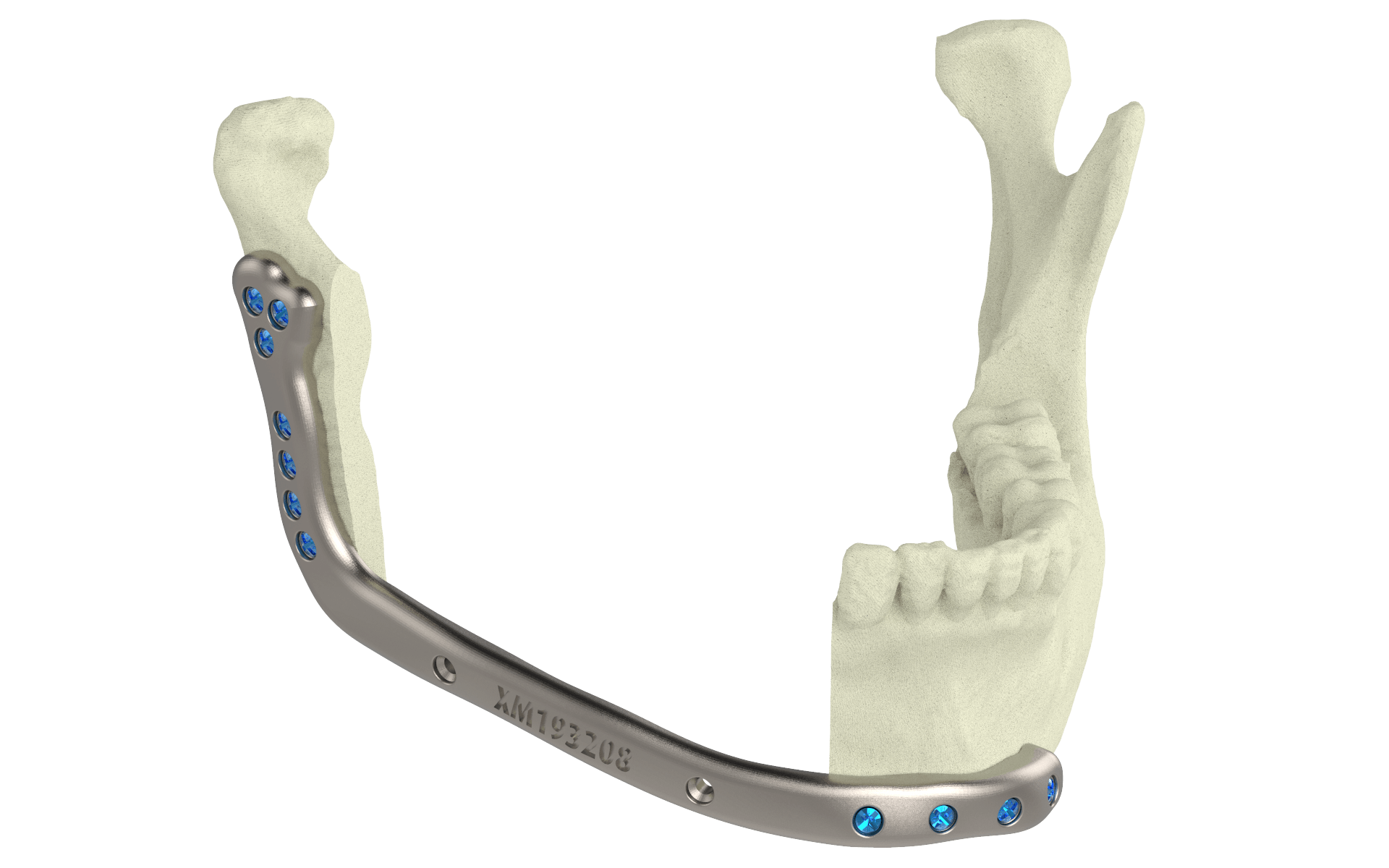
Corrective Jaw Surgery Procedure
Jaw surgery usually begins with braces to align the teeth. Then, the surgery repositions the jaws. After surgery, braces are used again to ensure everything stays aligned and works well.
Before The Procedure
- 1-2 Years Before Surgery: You’ll likely need braces to align your teeth properly.
- 3-6 Months Before Surgery: This time is for detailed planning with your surgeon, including X-rays, Computed tomography (CT) scans, and dental impressions.
During the Procedure
- Surgery Day: The surgery itself usually takes 3-5 hours under general anaesthesia.
Jaw Surgery Recovery And Care
- First Week: You’ll stay in the hospital for monitoring and pain management. Expect significant swelling during this time.
- 2-4 Weeks: Your teeth may be tied together to stabilise your jaw, and you’ll start with a liquid diet, slowly moving to soft foods.
- 6-12 Weeks: You can gradually return to normal activities, and you’ll have follow-up visits for orthodontic adjustments.
- 6-12 Months: Braces will help maintain your teeth’s new positions, and you’ll see most of the swelling gone.
- 1 Year and Beyond: Full recovery is usually complete, and you’ll have regular check-ups to ensure everything stays on track.
Corrective Jaw Surgery Benefits

Book an Appointment
Fill out the form for any request or questions you have and we will contact you within one working day..
How Are Jaw Defects Diagnosed?
- Consultation with a maxillofacial surgeon: Discuss your symptoms and concerns.
- Physical Examination: The surgeon checks your jaw for abnormalities and how your teeth fit together.
- X-Rays: Essential for assessing jaw bone structure and tooth position.
- CT Scans: Provide a detailed three-dimensional view for surgical planning.
- Analysis of your bite: Identifies misalignment issues to understand upper and lower teeth alignment.
How Are Jaw Defects Diagnosed?
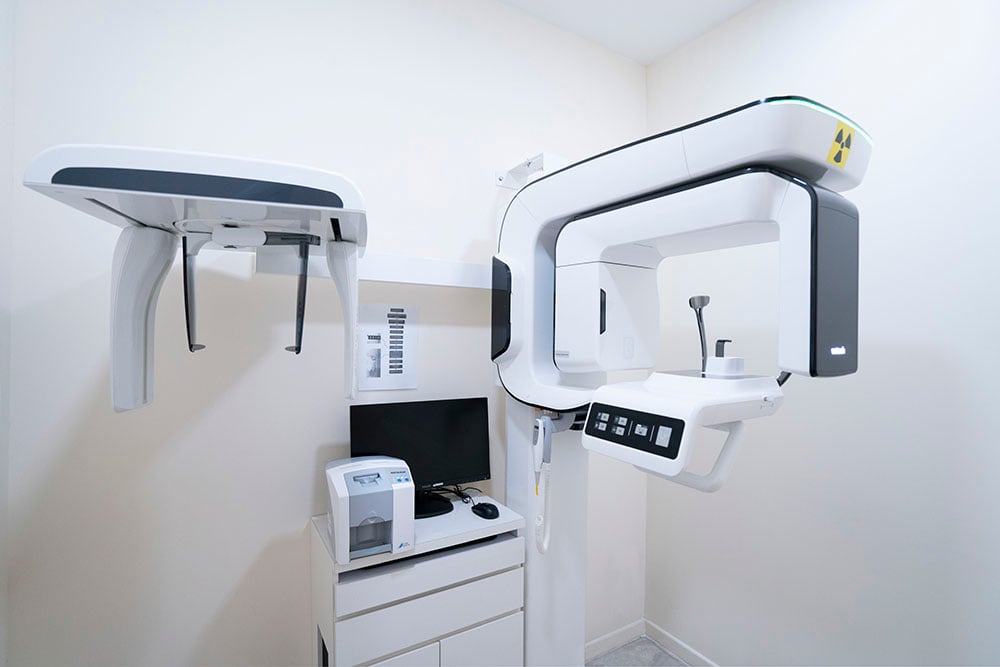
Jaw Surgery Risks

- Blood Loss: Minor bleeding is common; significant loss is rare.
- Infection: Low risk if post-operative care is meticulous.
- Relapse: Jaw may shift back over time.
- Bite Fit and Jaw Joint Pain: Potential problems with bite alignment and jaw joint pain.
- Jaw Fracture: Risk of breaking the jaw during surgery.
- Root Canal Therapy: Some teeth may need root canal treatment.
- Further Surgery: Additional procedures might be necessary.
- Nerve Injury: Temporary or, rarely, permanent sensation loss.
- Jaw Loss: Small risk of losing a portion of the jaw.
To understand the relevance of these risks to you, discuss them thoroughly with your surgeon.
Orthognathic Surgery Complications

- Short-term issues: Temporary numbness/tingling in chin, nose, lips, cheeks, or tongue.
- Bleeding: Possible excessive blood loss during the operation.
- Infection risks: Post-operative infections need prompt medical attention.
- TMJ issues: Surgery can involve complex procedures with varying recovery times.
- Serious complications: Rare but include fatalities and vegetative states.
- Foreign body: Rare presence of foreign objects at the operation site.
- Unexpected bite changes: Changes in bite after surgery.
- Poor healing: Jaw bones may heal poorly.
- Blood supply issues: Loss of blood supply and vitality of the bone.
- Airway changes: Unexpected changes in the airway affecting voice quality or increasing snoring.
- Facial nerve injury: Temporary or permanent weakness or paralysis of facial muscles.
- Orbital/base of skull injury: Can result in double vision, excessive tearing, dry eyes, or, very rarely, blindness or stroke.
- Dislodged components: Splints (devices used to immobilise and support injured bones or joints) or wires used to guide the bite may become loose, with risks of swallowing or inhaling these parts.
Your surgeon will discuss these potential risks with you, tailored to your specific health profile. It's important to feel comfortable with the information provided, so don't hesitate to ask questions.
How Much is Jaw Surgery?
| Type of Surgery | Estimated Cost (SGD) |
|---|---|
| Genioplasty (Chin Augmentation) | From SGD 4,500 |
| Maxillary Osteotomy (Upper Jaw Surgery) | SGD 15,000 - SGD 20,000 |
| Mandibular Osteotomy (Lower Jaw Surgery) | SGD 15,000 - SGD 20,000 |
| Bimaxillary Osteotomy (Double Jaw Surgery) | SGD 30,000 - SGD 36,000 |
| TMJ Surgery | SGD 40,000 - SGD 70,000 |
| Cleft Palate Surgery | SGD 14,000 - SGD 18,000 |
| Le Fort I Osteotomy | SGD 10,000 - SGD 24,000 |
| Bilateral Sagittal Split Osteotomy (BSSO) | SGD 9,000 - SGD 24,000 |
| Distraction Osteogenesis | SGD 30,000 - SGD 80,000 |
| Jaw Replacement Surgery | SGD 15,000 - SGD 20,000 (single jaw), SGD 30,000 - SGD 36,000 (double jaw) |
The cost of jaw surgery depends on the type of procedure, complexity, and whether one or both jaws are treated. Reach out to the Nuffield team for any queries.
*All fees are subject to prevailing Singapore Goods and Services Tax.
*Fee adjustments may apply depending on the number of teeth treated.
Subsidies For Jaw Surgery

Subsidies For Jaw Surgery
Jaw surgery can be costly. The good news is that Singapore's healthcare system offers financial support:
1. Medisave: Claim from $5,000 onwards depending on procedure complexity and withdrawal limits. For double jaw surgery, withdraw about $7,500; single jaw surgery about $4,000.
2. Integrated Shield Plan: Claim insurance for 60% to 100% of your bill, depending on your plan.
3. Insurance: Check your dental insurance policy details; providers like Great Eastern, Prudential, and AIA might cover surgical costs.
Why Choose Nuffield Dental For Your Jaw Surgery?
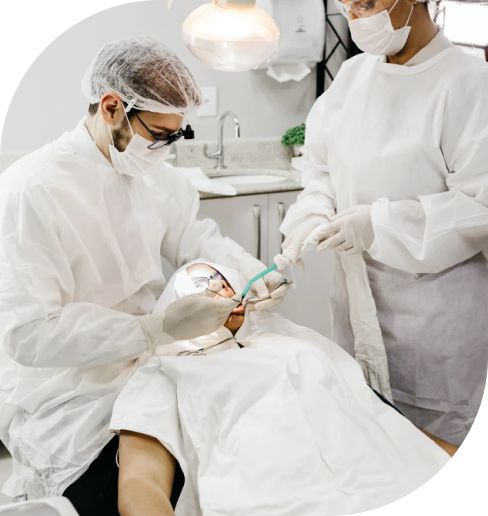
Why Choose Nuffield Dental For Your Jaw Surgery?
Expert Team: At Nuffield Dental, our team of oral and maxillofacial surgeons have received recognition for their expertise, both locally and internationally. We provide quarterly staff training and have a strong leadership team.
Personalised Attention: We believe in providing care tailored to your specific needs for peace of mind. Our team works closely with each patient to develop a personalised treatment plan that best suits their needs.

Book an Appointment
Fill out the form for any request or questions you have and we will contact you within one working day..
Jaw Surgery Alternatives
Orthodontics
Braces (dental devices with wires and brackets used to straighten and align teeth over time) or clear aligners (transparent, removable dental devices used to straighten teeth and correct alignment issues) gradually move teeth into better alignment, offering noticeable improvements without surgery.
Retainers
Retainers are custom-made metal or plastic devices that maintain teeth alignment after braces are installed. Some specialised retainers can make minor corrections, possibly avoiding surgery.
Face Lift Dentistry
Face lift dentistry is a dental method that improves bite and jaw alignment without surgery. It optimises the jaw's position to enhance facial aesthetics and functionality, potentially reducing wrinkles and improving overall facial balance.
Appliances
Dental appliances, like palatal expanders (devices that widen the upper jaw to correct bite issues), correct bite problems by applying gentle pressure over time.
Arthritis Treatments
If jaw concerns are due to arthritis (inflammation of joints causing pain, stiffness, and reduced mobility), medications or therapies might help. Consult a specialist for targeted treatment.
Jaw Surgery Alternatives
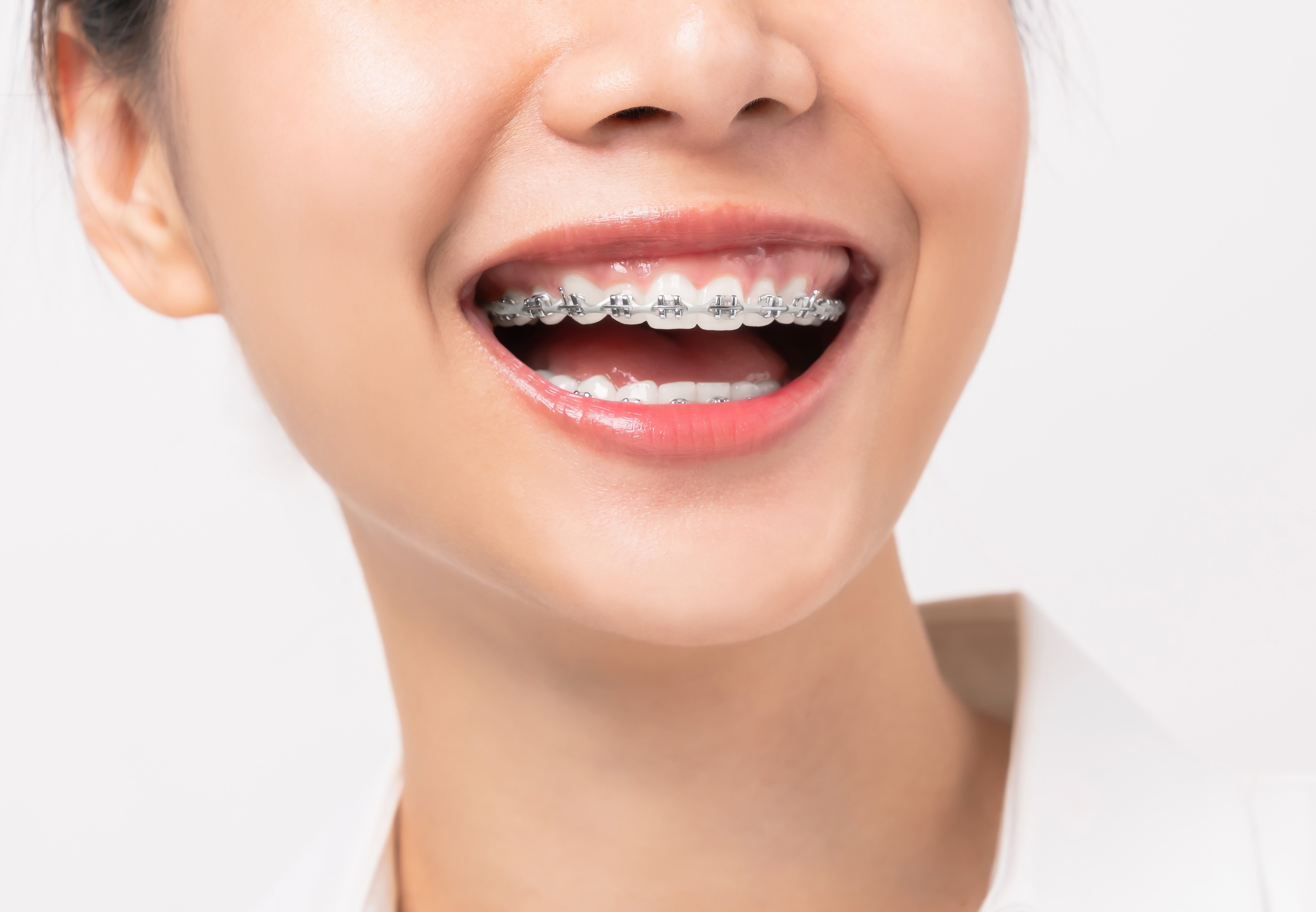

Book an Appointment
Fill out the form for any request or questions you have and we will contact you within one working day..


Why Choose Nuffield Dental?
Nuffield Dental is a one-stop, multi-disciplinary dental care centre in Singapore. At Nuffield, we put you first. We believe in providing personalised service for each patient.
Nuffield Dental is a one-stop, multi-disciplinary dental care centre. Here at Nuffield Dental, we pride ourselves of our personalised oral care for each and every one of our patients. We need to make sure you get all the help you need to make your dental procedures comfortable, accessible and seamless.
Our dentists have specialised in oral maxillofacial surgery for 20+ years. We have accredited dental providers who are skilled in the area of dental implant surgery.
Articles
The newest and best lifestyle articles selected by our editorial team.

- 17 Nov 2025
- 2 mins read
Current scientific evidence does not show a conclusive connection between intact dental amalgam fillings and symptoms such as brain fog, chronic...

- 17 Nov 2025
- 2 mins read
The Minamata Convention on Mercury established 2034 as the global target year to end the use of dental amalgam. While this may seem gradual, the...

- 17 Nov 2025
- 2 mins read
Dental amalgam has been used in restorative dentistry for more than 150 years. It has long been regarded as a durable and practical material....
.png?width=2223&height=447&name=Background%20(4).png)






